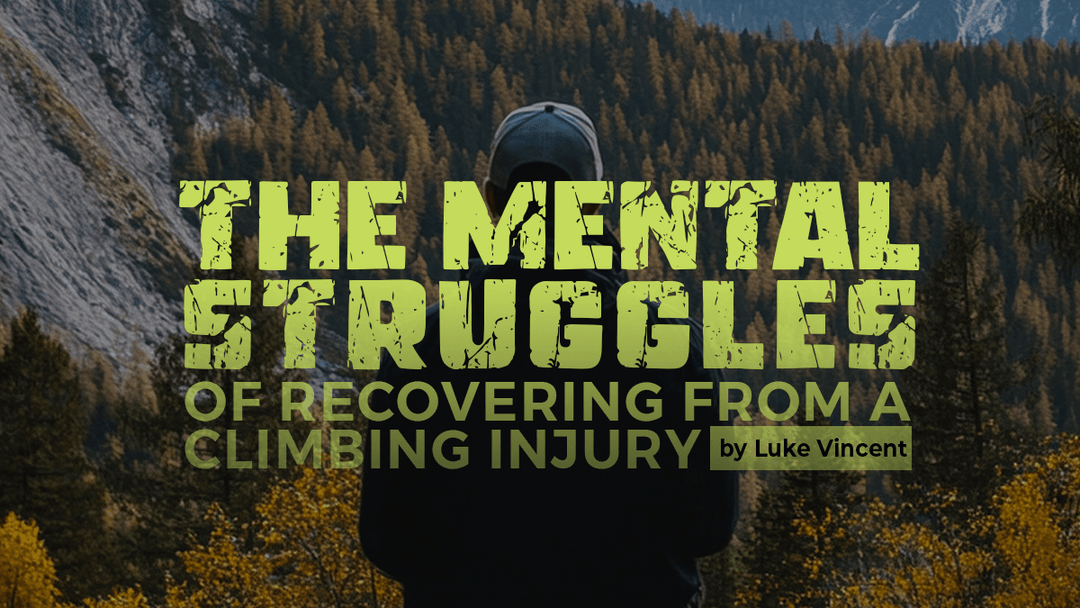The Progression of Rock Climbing Shoe Angles

Understanding the progression of rock climbing shoe angles is crucial for beginner climbers. In a nutshell, the more downturned the shoe, the steeper the climbing. However, this is just the beginning of your journey to finding the perfect climbing shoes. Let's delve deeper into this topic to help you make an informed decision when buying your first or next pair of climbing shoes.
The progression of climbing shoe angles is neutral, moderate, and aggressive. The design of each shoe refers to how downturned it is: a neutral shoe isn't downturned, a moderate shoe is slightly downturned, and an aggressive shoe is very downturned.
Learn more below about what angle is best for you and some tips for deciding your next pair of climbing shoes.
Neutral
When looking for your first pair of climbing shoes, you'll find a description stating that the shoe is "neutral." Neutral means that the shoe has little, if any, angle. To think of it differently, think of it as "flat."
For beginner climbers, a neutral shoe is an ideal starting point. These shoes are designed to provide a relaxed fit for all-day comfort, allowing your toes to lie flat inside. This design makes them more comfortable than moderate or downturned options, giving you the confidence to continue your climbing journey.
Neutral climbing shoes aren't explicitly designed for beginner climbers, though. They're also an excellent option for experienced climbers who want comfortable shoes for long multi-pitch or crack climbs.
Moderate
A moderate shoe is 'moderately' downturned. If you're looking for a shoe that can perform on all terrain, these shoes are for you.
Moderate shoes are a versatile option that can perform well on various terrains. They are suitable for slabs, cracks, long multi-pitch climbs, and slightly overhung walls. If you're looking for a single pair of climbing shoes that can handle different types of climbing, moderate shoes are a great choice.
The issue with an all-around shoe is that although it performs well on most terrain types, it's best for vertical to slightly overhung terrain. If you're looking for a slab climbing shoe, you'll want a neutral angle design, and if you're looking for steep climbing shoes, check out aggressive shoes.
Aggressive
Aggressive climbing shoes are the most advanced design that you'll find. They're super downturned and designed to put your foot in a powerful position for overhanging climbing. The heel tension helps keep your foot in place and lets you stand on the smallest of holds.
Because of their snug fit, aggressive climbing shoes are only meant for single-pitch climbing. After each burn, the climber removes them to let their feet rest since they're not as comfortable.
When buying your first pair, look for neutral or moderate climbing shoes. An aggressive pair will not be comfortable enough for you to focus on developing your technique.
Tips For Choosing a Pair of Climbing Shoes

Don't Downsize
There's a common misconception that climbing shoes need to be downsized significantly for a better fit. However, climbing shoes have evolved, and this is no longer necessary. You can now find a comfortable pair without enduring unnecessary pain, allowing you to focus on developing your technique with confidence.
Why endure all that pain when you're just starting? Focus on your technique, and the rest will come.
Climbing Style
What style of climbing do you do/want to do? Are you interested in crack climbing or long multi-pitch routes? Are you primarily climbing in the gym? Or are you interested in getting horizontal and climbing the steepest roofs you can find?
The climbing shoe you purchase will depend on your climbing style. There is no need to grab an aggressive pair if you're planning to spend all day on long multi-pitches.
Closure systems
Like angles, climbing shoes have three different closure systems. That is a personal preference, but it should be considered when looking for your next pair.
Laces: Tried and true, laces have been the primary closure system for climbing shoes since their invention. They're the most versatile because you can tighten them down in specific areas or loosen them up when you want a little break without removing them.
Straps: Also known as "hook-and-loop," Velcro has been the standard material for this closure system. It can be tightened and loosened, much like laces, but it doesn't offer a customizable fit. However, it's quick and easy to put on/take off when you want to slip off your shoes between climbs.
Slip-on: Removing any unnecessary material, slip-on shoes stay on your foot due to their elastic design. They have a low profile and offer the greatest sensitivity because they lack a firm sole. Many crack climbers and those who train in separate shoes enjoy this style.




